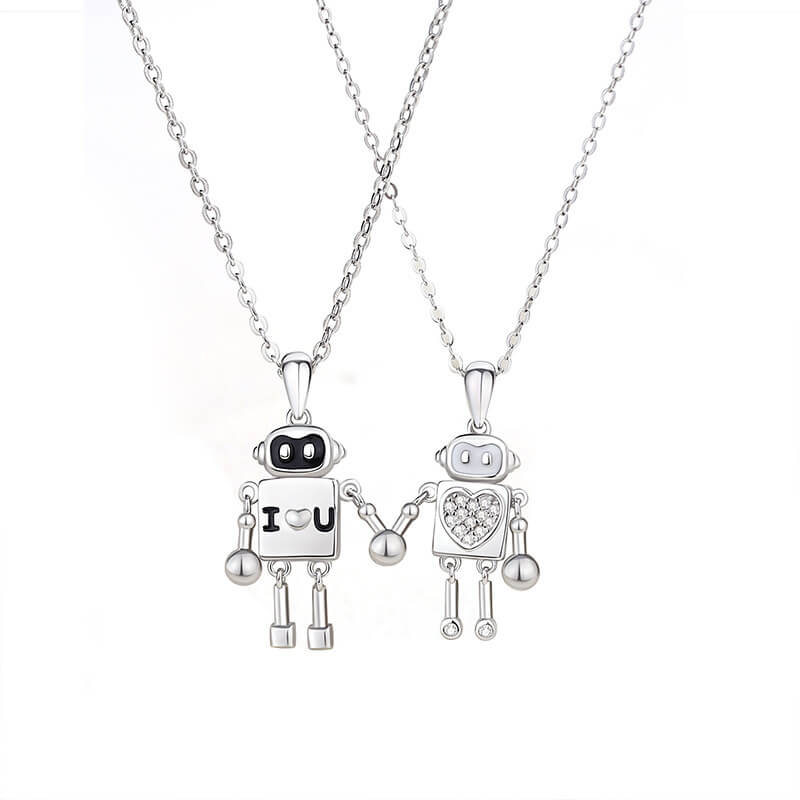
The Ultimate Guide to Silver Jewelry Care: Cleaning Techniques for Lasting Shine
Share
Understanding Silver Jewelry: A Primer for Care
The Properties of Silver
Silver is known for its lustrous beauty and versatility in jewelry making. It is a soft, white metal that is highly reflective, which makes it perfect for crafting stunning accessories. However, this softness also means silver is prone to scratching and tarnishing. Over time, exposure to air and moisture can cause silver to lose its shine and develop a dark, dull film known as tarnish. Understanding these properties of silver is crucial for anyone looking to maintain their jewelry's luster.

Why Proper Cleaning is Essential for Silver Jewelry
Silver jewelry adds elegance, but it can tarnish over time. Regular cleaning keeps it shining. Dirt and oils from our skin speed up tarnishing. Exposure to air and moisture also harms silver jewelry. Frequent cleaning removes build-up and prevents long-term damage. This keeps your silver in top shape and avoids costly repairs. Remember, cleaned silver jewelry retains its value and beauty for years.
Best Practices for Cleaning Silver Jewelry
The Do's and Don'ts of Silver Jewelry Cleaning
- Do: Use a soft cloth or brush to gently wipe away tarnish.
- Don't: Use abrasive materials that can scratch the silver.
- Do: Create a cleaning solution of warm water and mild dish soap.
- Don't: Soak silver jewelry in chlorine or acetone, which can damage it.
- Do: Dry silver jewelry thoroughly after cleaning to prevent water spots.
- Don't: Store damp silver jewelry, as this can encourage tarnish.
- Do: Occasionally polish silver jewelry with a cloth made for silver.
- Don't: Use toothpaste to clean silver; it's too abrasive.
- Do: Keep silver jewelry in a cool, dry place when not in use.
- Don't: Expose silver to harsh chemicals or extreme temperatures.
Step-by-Step Guide to Cleaning Silver Jewelry
To ensure your silver jewelry retains its luster, follow these simple steps:
- Prepare your work area: Lay out a soft towel and gather your cleaning supplies.
- Mix a gentle cleaning solution: Combine warm water with a mild dish soap.
- Submerge the jewelry: Let your silver soak for 5–10 minutes.
- Use a soft brush: Gently scrub the jewelry with a soft-bristle brush.
- Rinse in clean water: Wash off any soap residue under warm running water.
- Dry thoroughly: Pat the jewelry dry with a lint-free cloth.
- Polish gently: Use a silver cloth to restore shine.
By following these steps, you can keep your silver jewelry looking as good as new.
Tools and Materials for Cleaning Silver Jewelry
When cleaning silver jewelry, having the right tools and materials is crucial for a safe and efficient process. Here's a simple list of essentials you should have on hand:
- Soft, Non-Abrasive Cloths: Use to gently wipe and polish your silver pieces.
- Mild Dish Soap: A simple, phosphate-free soap is perfect for mixing with warm water to clean your jewelry.
- Small Bowl: To hold the soapy solution for cleaning.
- Soft-Bristled Toothbrush: Ideal for getting into crevices without scratching the silver.
- Jewelry Polishing Cloth: Specifically designed to maintain shine without harming the metal.
- Silver Polish: Only use polishes formulated for silver to remove tarnish effectively.
- Air-Tight Container: For storing silver jewelry and keeping it free from excess moisture and tarnish.
Advanced Tips and Techniques for Silver Jewelry Care
Maintaining the Shine: Follow-Up Care and Storage
To ensure your silver jewelry maintains its luster, proper follow-up care and storage is key. After cleaning, thoroughly dry each piece to prevent tarnish. When storing silver, keep it away from air and moisture which accelerate tarnish. Use anti-tarnish strips in your storage area. Place jewelry in individual bags or compartments to avoid scratches. For pieces you wear often, consider a tarnish-resistant cloth-lined jewelry box. Occasionally, polish these items to keep them gleaming.
Troubleshooting Common Issues with Silver Jewelry
Even the most cautious silver jewelry owner may face issues over time. Here is how you can address some common problems:
- Tarnishing: Silver naturally tarnishes. If polishing doesn't work, try a silver dip solution. Rinse and dry the piece afterward.
- Scratches: Minor scratches can often be buffed out using a soft cloth. Deeper scratches may require professional service.
- Clasp Failure: Clasps can become loose or break. Small adjustments can be made at home using pliers. However, if the damage is severe, take it to a jeweler.
- Discoloration: Contact with harsh chemicals can cause discoloration. To restore your jewelry, use a specialized silver cleaning product.
- Loose Stones: If a stone in your silver jewelry becomes loose, secure it back in place with clear nail polish or jeweler's glue. For valuable pieces, consult a professional.
By knowing these techniques, you can keep your silver jewelry in excellent condition for years.
When to Consult a Professional: Silver Jewelry Care
While DIY methods often work, consulting a professional is sometimes best. Seek expert help when:
- Your silver has complex designs that are hard to clean.
- There's stubborn tarnish that home remedies can't remove.
- You suspect the silver is mixed with other metals or stones.
- The jewelry has a special finish that might be damaged.
Professionals can also offer advice on long-term care. They ensure your jewelry stays in top shape without damage.


